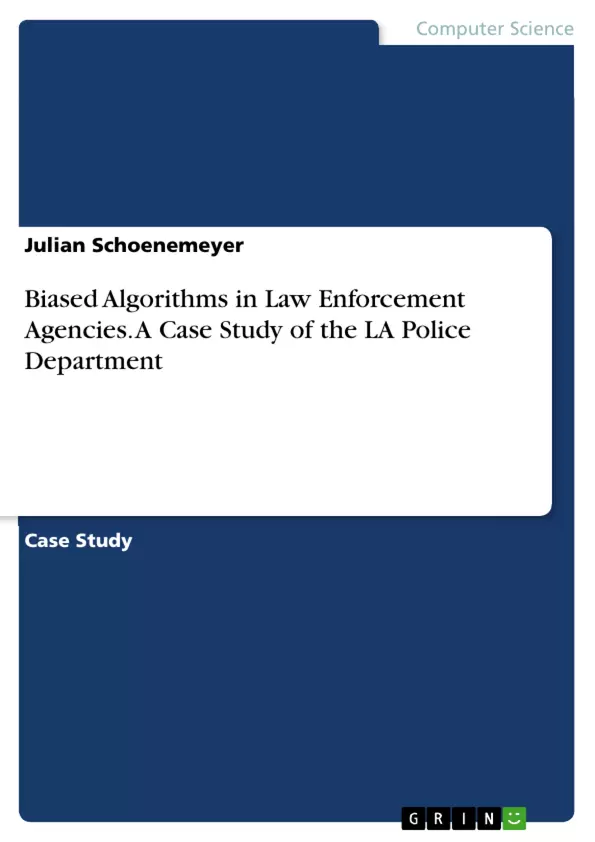This paper tries to answer the question, how the LA Police Department uses AI (Artificial Intelligence) algorithms to profile criminality. Can these algorithms always be fair and impartial?
In today’s society, we are constantly surrounded by artificial intelligence, especially by algorithms that try to profile us to predict our future behaviour. These algorithms are deeply embedded in our daily lives, whether we are watching Netflix, using Amazon music or do online shopping, they try to present us with suggestions to get us more involved with the platform to spend more time there and therefore more money. But these algorithms are not only operated by business companies alone, they are also implemented with public policy providers and law enforcement agencies, like police forces.
First, the author gives a detailed explanation of how these algorithms work, then he lists examples in which areas police forces might use these algorithms, such as facial recognition software and making suggestions about the sentencing of criminals. However, the paper also discusses critique of the use of technology by law enforcement. Many ascribe these algorithms a certain bias, especially racially, having mainly been trained on a dataset, which in itself is biased. The next chapter contains the author's methodology, which he then applies to his case study about the LA Police Department in the last part of his paper.
Inhaltsverzeichnis (Table of Contents)
- Surrounded by Algorithms
- Methodology
- Case Study...
- Conclusion........
Zielsetzung und Themenschwerpunkte (Objectives and Key Themes)
This paper explores the use of algorithms in law enforcement agencies, specifically examining the potential for bias and its impact on society. It aims to answer questions about the fairness and impartiality of these algorithms, focusing on how they are used to profile criminality.
- The functioning of algorithms and the potential for bias
- The use of algorithms in law enforcement agencies, such as predictive policing and predictive sentencing
- The impact of biased algorithms on society, particularly on ethnic minorities
- The difficulty in detecting and mitigating algorithmic bias
- The role of human bias in the development and application of algorithms
Zusammenfassung der Kapitel (Chapter Summaries)
- Surrounded by Algorithms: This chapter introduces the concept of algorithms and their increasing presence in society. It discusses the potential for bias in algorithms and how this bias can be perpetuated through the use of existing data. The chapter then explores the application of algorithms in the security sector, specifically focusing on facial recognition software and predictive policing.
- Methodology: This chapter describes the research methods used in the paper. It may include details on the specific case study chosen, the data sources used, and the analytical techniques employed.
Schlüsselwörter (Keywords)
The key focus areas of this paper include algorithmic bias, predictive policing, predictive sentencing, facial recognition software, discrimination, ethnic minorities, and the impact of AI on law enforcement agencies.
- Quote paper
- Julian Schoenemeyer (Author), 2023, Biased Algorithms in Law Enforcement Agencies. A Case Study of the LA Police Department, Munich, GRIN Verlag, https://www.hausarbeiten.de/document/1334829


